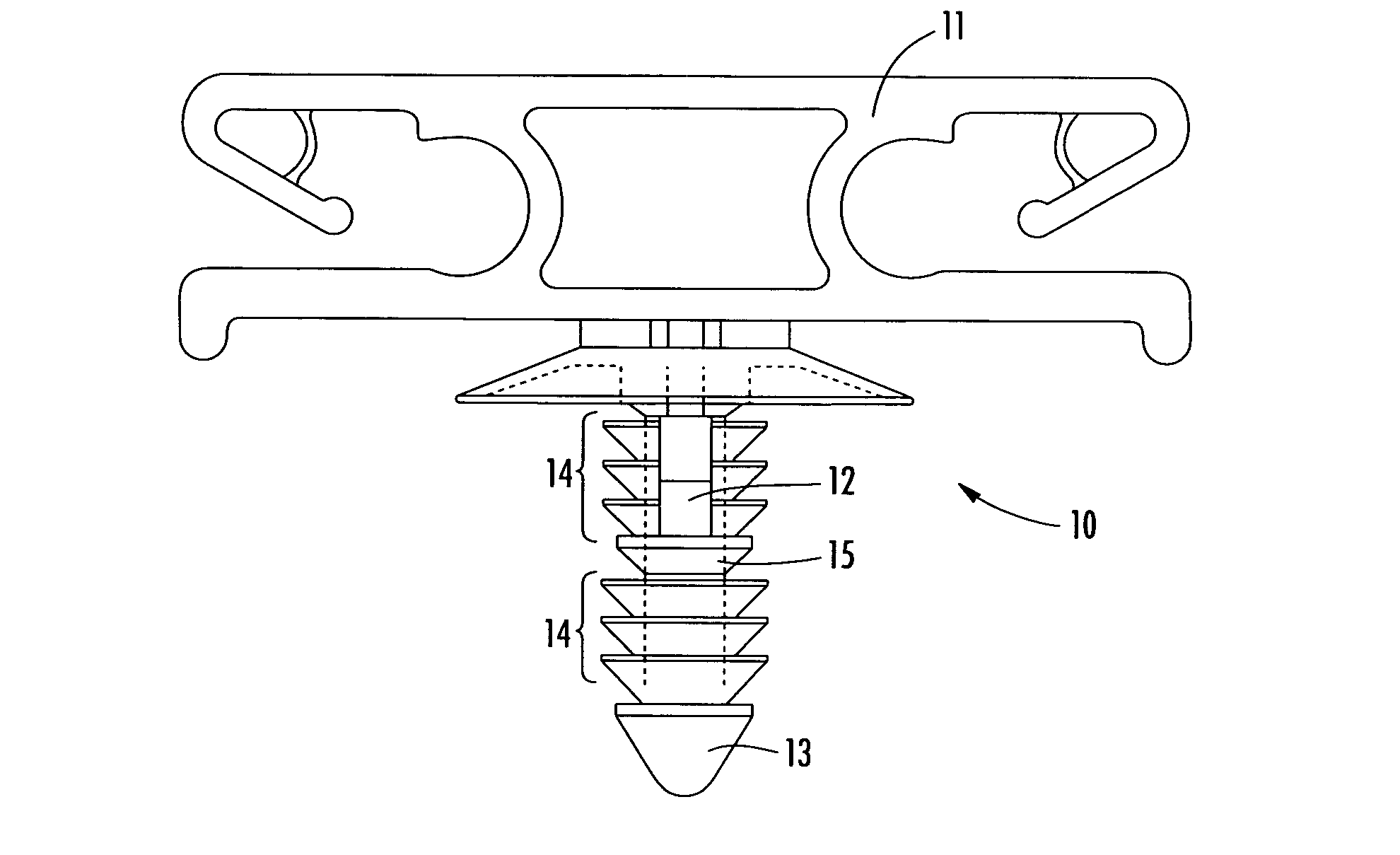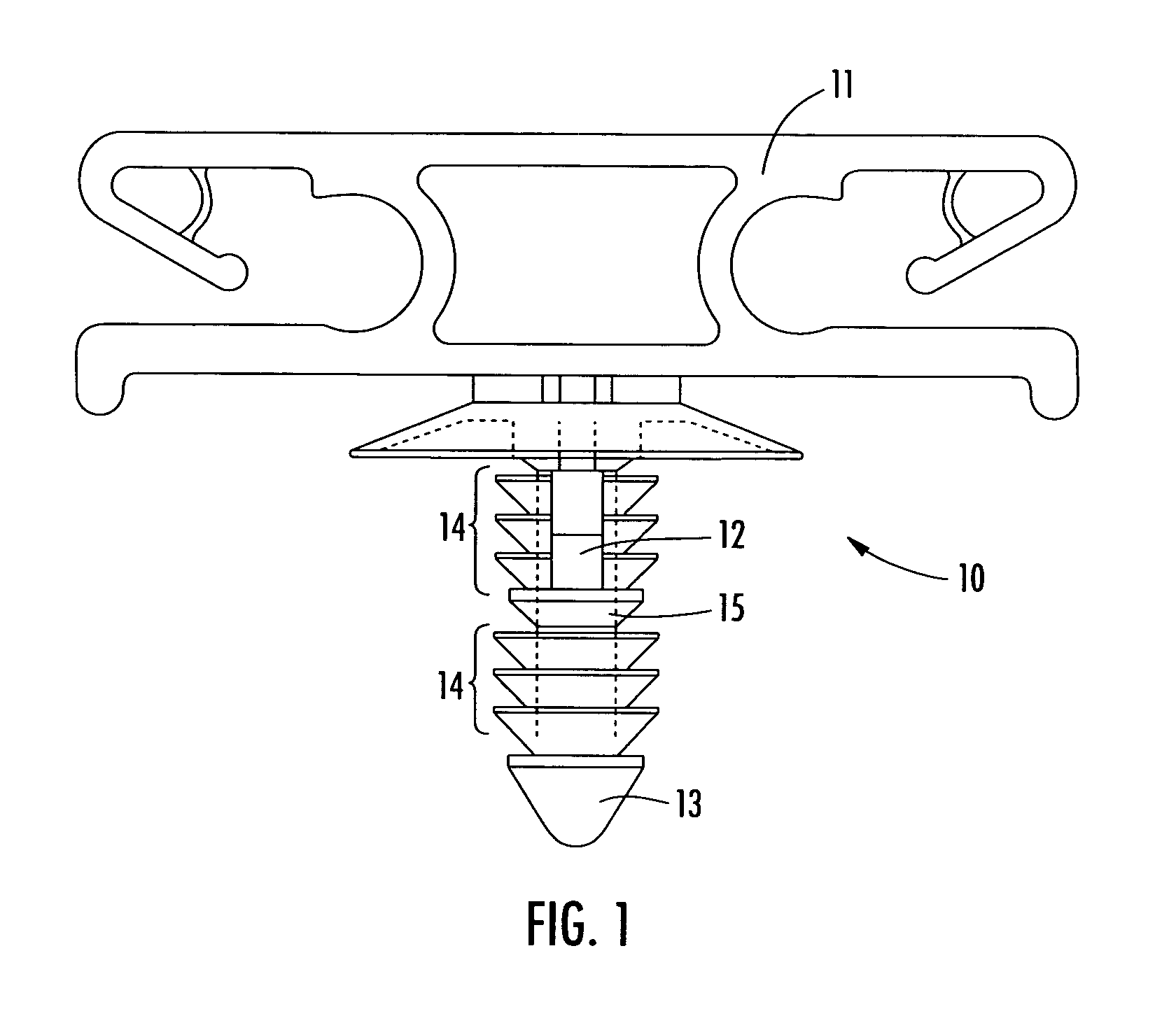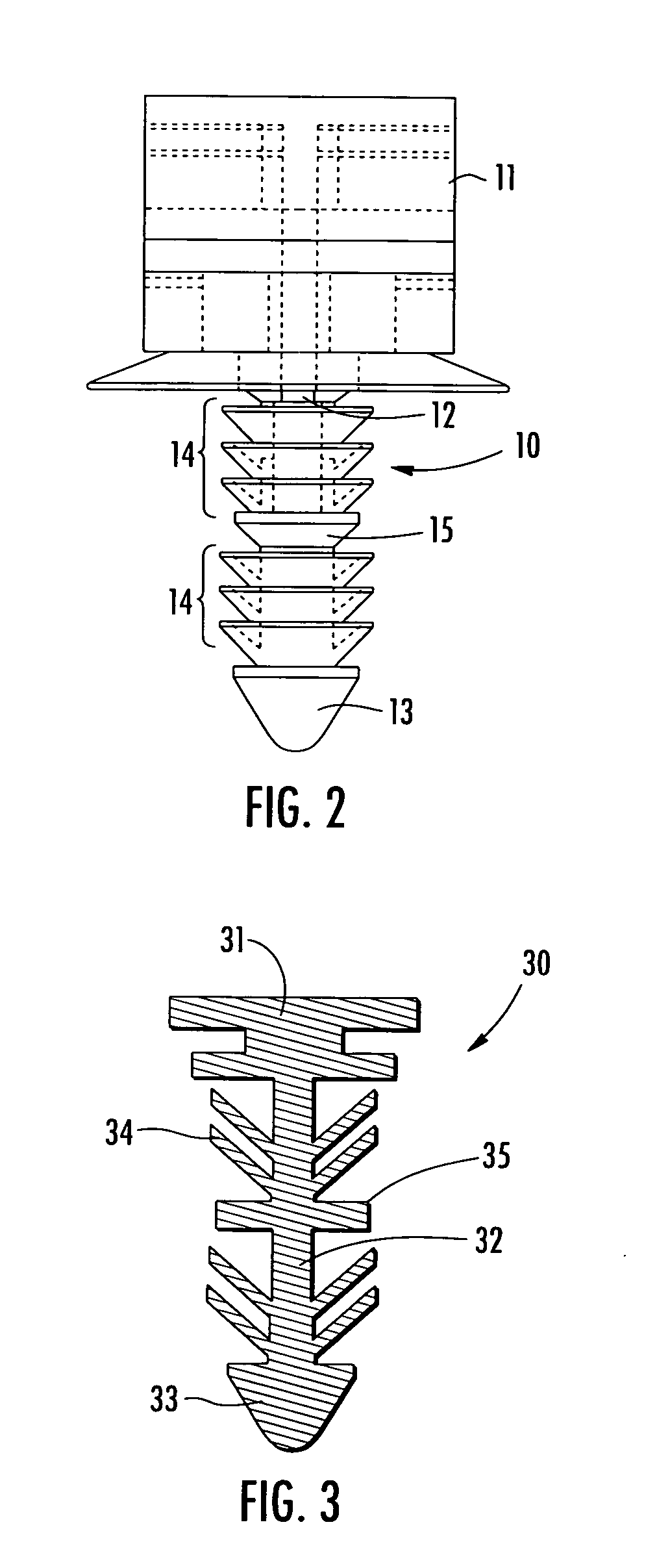Fastener
a technology of fasteners and screws, applied in the direction of threaded fasteners, fastening means, screws, etc., can solve the problems of affecting the performance of the component, the bending or flexing of the fin, and the wobble of the hole of the tree-type fastener with the bent or flexed fin
- Summary
- Abstract
- Description
- Claims
- Application Information
AI Technical Summary
Benefits of technology
Problems solved by technology
Method used
Image
Examples
Embodiment Construction
[0014] The Figures illustrate exemplary embodiments of tree-type fasteners of the invention. These embodiments may include a fin stabilization base, also referred to as a fin stabilizer or force multiplier base, located at one or more desired positions along the fastener shaft. In one embodiment, the fin stabilizer is located at a distance below the known work piece thickness of the application, as well as below any additional components attached to the work piece by the fastener. At this location, the fin stabilizer acts as a stop or support structure for the fins by supporting the underside of the fins to prevent the fins from rolling over or stacking-up one on top of another. By placing a fin stabilizer strategically along the shaft, the extraction force required to remove the fastener will significantly increase and wobbling due to damaged fins may also be prevented. It should be understood that additional fin stabilizers may be utilized to further increase the extraction force ...
PUM
 Login to View More
Login to View More Abstract
Description
Claims
Application Information
 Login to View More
Login to View More - R&D
- Intellectual Property
- Life Sciences
- Materials
- Tech Scout
- Unparalleled Data Quality
- Higher Quality Content
- 60% Fewer Hallucinations
Browse by: Latest US Patents, China's latest patents, Technical Efficacy Thesaurus, Application Domain, Technology Topic, Popular Technical Reports.
© 2025 PatSnap. All rights reserved.Legal|Privacy policy|Modern Slavery Act Transparency Statement|Sitemap|About US| Contact US: help@patsnap.com



